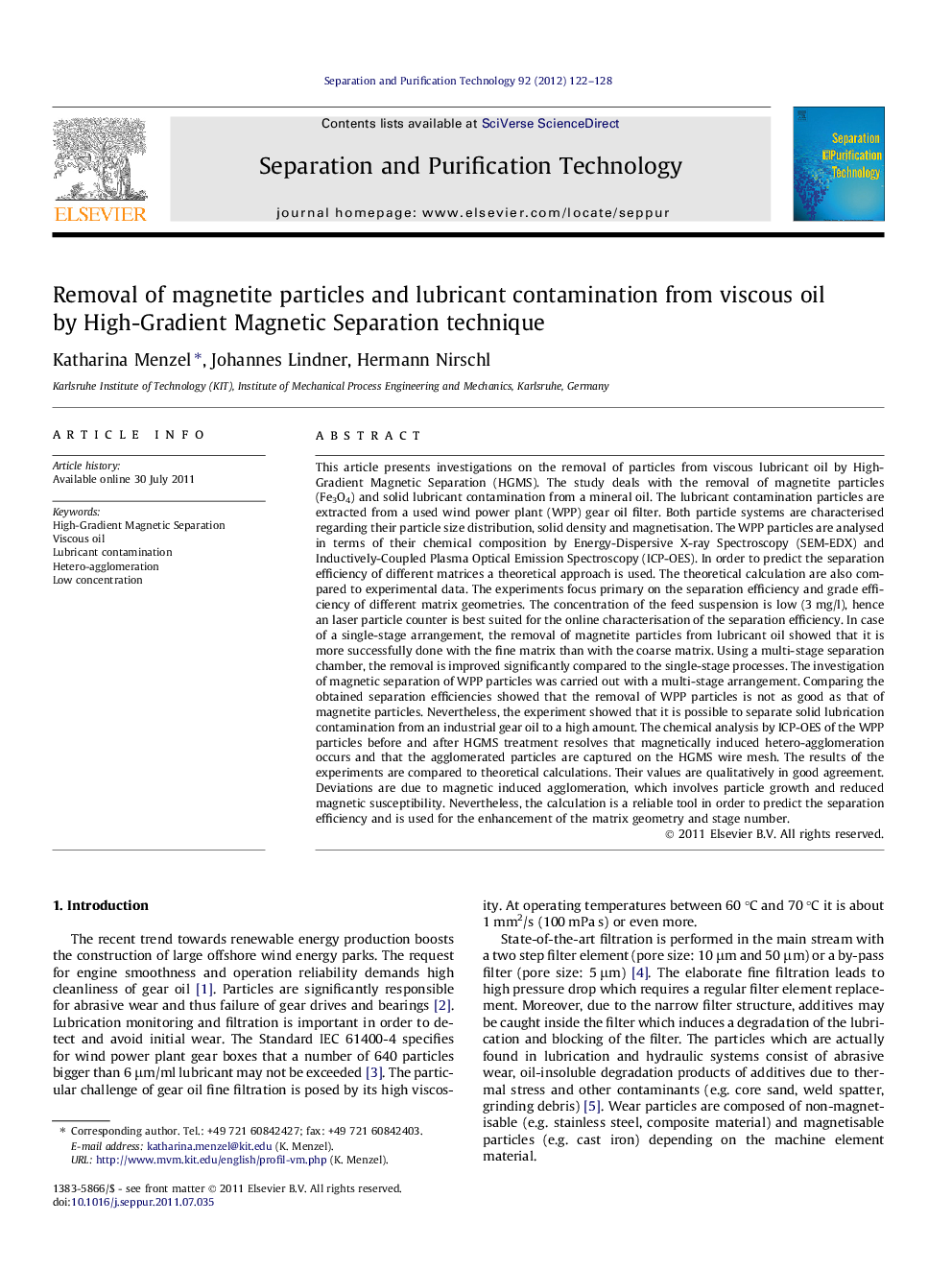| کد مقاله | کد نشریه | سال انتشار | مقاله انگلیسی | نسخه تمام متن |
|---|---|---|---|---|
| 642160 | 1457027 | 2012 | 7 صفحه PDF | دانلود رایگان |

This article presents investigations on the removal of particles from viscous lubricant oil by High-Gradient Magnetic Separation (HGMS). The study deals with the removal of magnetite particles (Fe3O4) and solid lubricant contamination from a mineral oil. The lubricant contamination particles are extracted from a used wind power plant (WPP) gear oil filter. Both particle systems are characterised regarding their particle size distribution, solid density and magnetisation. The WPP particles are analysed in terms of their chemical composition by Energy-Dispersive X-ray Spectroscopy (SEM-EDX) and Inductively-Coupled Plasma Optical Emission Spectroscopy (ICP-OES). In order to predict the separation efficiency of different matrices a theoretical approach is used. The theoretical calculation are also compared to experimental data. The experiments focus primary on the separation efficiency and grade efficiency of different matrix geometries. The concentration of the feed suspension is low (3 mg/l), hence an laser particle counter is best suited for the online characterisation of the separation efficiency. In case of a single-stage arrangement, the removal of magnetite particles from lubricant oil showed that it is more successfully done with the fine matrix than with the coarse matrix. Using a multi-stage separation chamber, the removal is improved significantly compared to the single-stage processes. The investigation of magnetic separation of WPP particles was carried out with a multi-stage arrangement. Comparing the obtained separation efficiencies showed that the removal of WPP particles is not as good as that of magnetite particles. Nevertheless, the experiment showed that it is possible to separate solid lubrication contamination from an industrial gear oil to a high amount. The chemical analysis by ICP-OES of the WPP particles before and after HGMS treatment resolves that magnetically induced hetero-agglomeration occurs and that the agglomerated particles are captured on the HGMS wire mesh. The results of the experiments are compared to theoretical calculations. Their values are qualitatively in good agreement. Deviations are due to magnetic induced agglomeration, which involves particle growth and reduced magnetic susceptibility. Nevertheless, the calculation is a reliable tool in order to predict the separation efficiency and is used for the enhancement of the matrix geometry and stage number.
► Removal of non-magnetisable and magnetisable lubrication contamination.
► Online monitoring of the separation efficiency by laser particle counter.
► High separation efficiency by multi-stage separation arrangement.
► Reliable tool in order to predict the separation efficiency.
Journal: Separation and Purification Technology - Volume 92, 18 May 2012, Pages 122–128